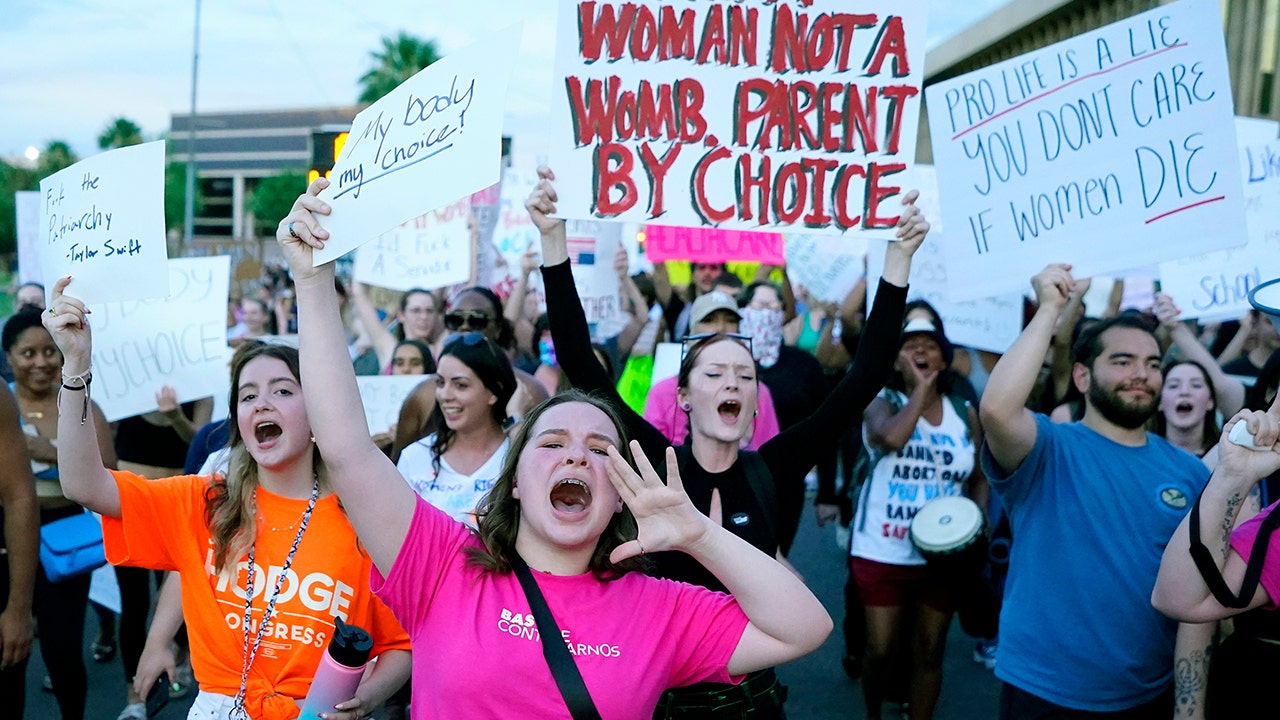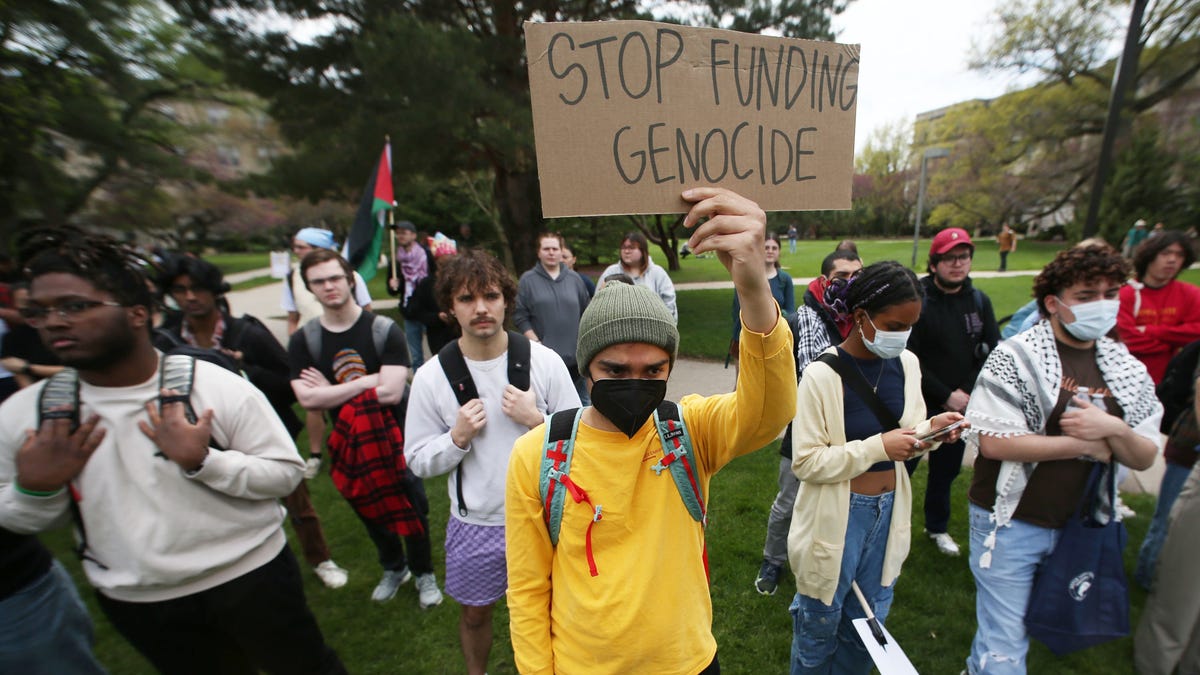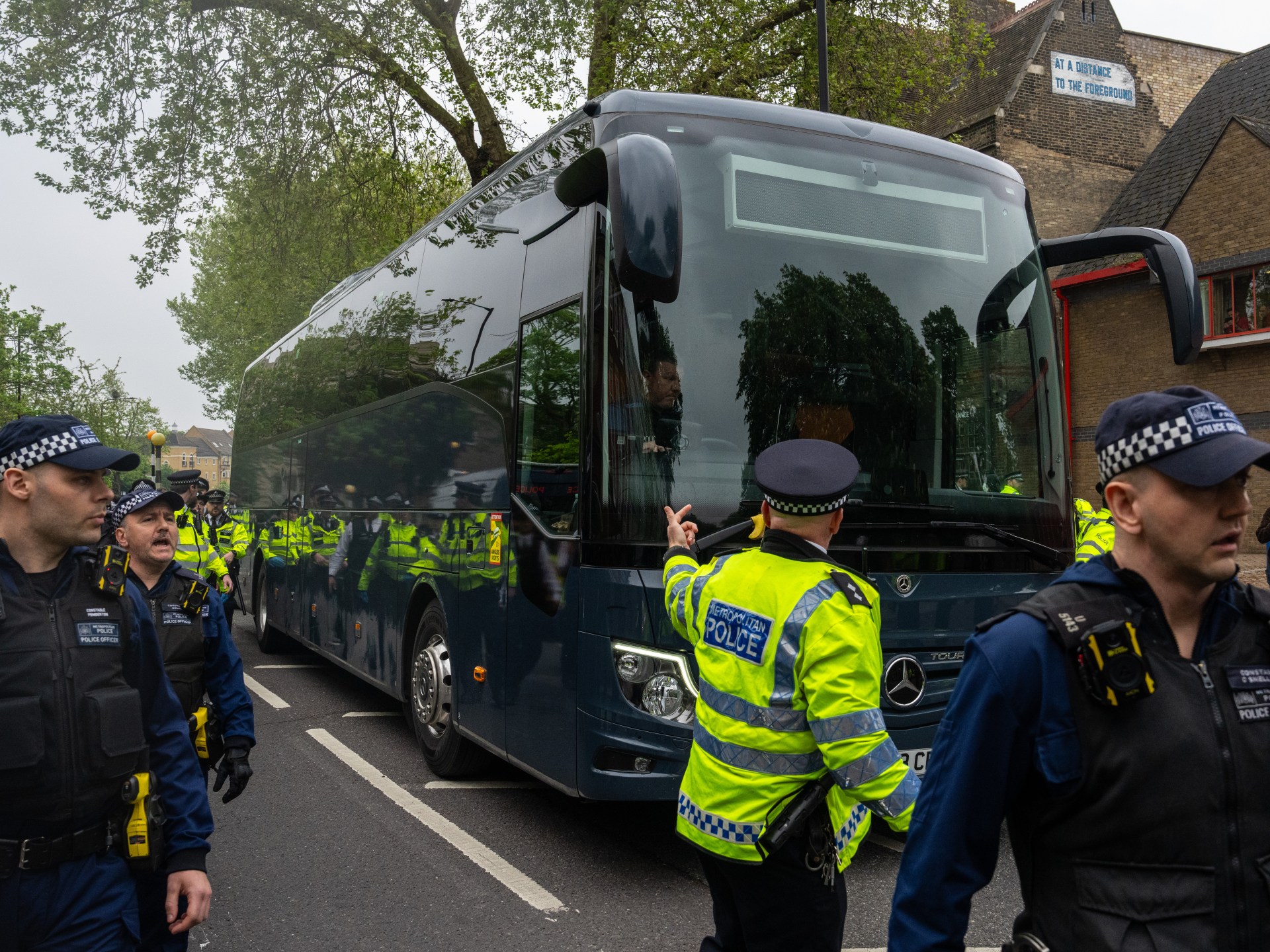Politics
Column: How Trump's trial will go well beyond the charges to paint a damning portrait of him

The scheme at the heart of the charges against Donald Trump in New York is well-known: To keep allegations of an affair with the adult-film actress Stormy Daniels from becoming public, Trump is accused of agreeing to pay her $130,000, camouflaged as payments to Michael Cohen for legal services. It’s in the camouflaging that Trump is charged with committing the 34 felonies at issue before a jury starting Monday.
But the jury, and the country, are going to hear a lot of evidence of Trump’s other allegedly wrongful acts — and a virtual avalanche of such evidence should the defendant decide to testify. That will paint a broader and more damning portrait of Trump, who is reportedly already on tenterhooks about Daniels’ expected testimony, giving him even more opportunities to complain that he is the victim of a no-holds-barred railroading at the hands of Manhattan Dist. Atty. Alvin Bragg.
Bragg’s team can introduce information about Trump’s other alleged misconduct under New York’s rules of evidence, which mirror the federal courts’. Known in New York as “Molineux evidence,” after the case that defined it, it’s generally considered a bonanza for prosecutors and a bane of defendants.
It’s an axiom of criminal law that jurors should assess guilt or innocence based on the defendant’s conduct in the case before them. That means they shouldn’t make their decision based on judgments about the defendant’s character — for example, that the defendant is a “bad person” who, having done bad things in the past, probably did them again. So it would be improper to introduce the fact that an alleged bank robber previously robbed a bank to show that he is a “bank-robbing kind of person” and therefore likely committed the bank robbery he’s now charged with.
New York’s rule generally prohibits the prosecution from relying on “character” or “propensity” evidence to urge conviction. But it’s riddled with exceptions that permit prosecutors to offer evidence of prior bad acts for many purposes other than character, including to show “motive, opportunity, intent, preparation, plan, knowledge, identity, absence of mistake, or lack of accident” — more or less anything other than the forbidden character inference.
One example in Trump’s case, greenlighted by the court over his vigorous objections, concerns a “catch and kill” scheme in which the National Enquirer agreed to buy and then bury embarrassing stories about the then-candidate. That’s not what happened in Daniels’ case, but Judge Juan M. Merchan agreed to let the prosecution present it to the jury. His rationale was that it is part of the same “narrative of events that precipitated” the alleged falsification of records and could help prove Trump’s purported intent to conceal allegations of affairs from voters.
Merchan likewise ruled that the prosecution may introduce a transcript of the notorious “Access Hollywood” tape in which Trump boasted of sexually assaulting women. The judge found that the comments could help show Trump’s motive for concealing the alleged Daniels affair because the revelation of the tape was a crisis for his campaign.
For similar reasons, Merchan is permitting testimony from model Karen McDougal about the affair she says she had with Trump and the Enquirer’s suppression of her story. Likewise, the court approved a limited presentation of evidence about the alleged purchase of information from a Trump Tower doorman, Dino Sajudin, to the effect that Trump fathered a child with a housekeeper.
The court will instruct the jury to regard the evidence only for its permissible purposes — for example, to demonstrate intent — and not to infer that because Trump may have done something bad before, he probably did so again. But trial lawyers understand that inferring acts based on character is human nature; it’s very hard in practice to prevent jurors from indulging the impermissible inference.
Moreover, if Trump takes the stand — as he has flatly asserted he will — that would permit the district attorney’s team to unleash a torrent of additional evidence of prior bad acts. That’s because the former president would be putting his own credibility at issue, enabling prosecutors to introduce more evidence related to that question.
On Monday, Merchan ruled that prosecutors may use several noxious episodes from Trump’s past to impeach his testimony if he takes the stand. They include New York Atty. Gen. Letitia James’ successful fraud case against Trump’s business and the writer E. Jean Carroll’s victorious lawsuit for sexual assault and defamation.
Such testimony would likely appall jurors who already have some notion of Trump’s essential sleaziness. It’s one of several reasons that notwithstanding his bombast, we should not expect him to testify. Trump’s more likely role in court over the coming weeks will be to sit still and seethe silently.
Harry Litman is the host of the “Talking Feds” podcast and the Talking San Diego speaker series. @harrylitman

Politics
House COVID committee calling for criminal probe into gain-of-function virus research in Wuhan

The Select Subcommittee on the Coronavirus Pandemic is calling for a criminal probe into the origins of the COVID-19 virus.
The demands for an investigation come after the release of an interim staff report accusing EcoHealth Alliance President Dr. Peter Daszak of funding “dangerous gain-of-function research in Wuhan, China, without sufficient oversight.”
“Overwhelming primary source documents and credible firsthand testimony gathered throughout the Select Subcommittee’s investigation provide significant evidence that Dr. Daszak repeatedly violated the terms of the NIH grant awarded to EcoHealth,” a Wednesday statement from the Committee on Oversight and Accountability reads.
ECOHEALTH ALLIANCE PRESIDENT TO TESTIFY ON COVID ORIGINS, WUHAN LAB TAXPAYER-FUNDED RESEARCH
Peter Daszak (R), Thea Fischer (L) and other members of the World Health Organization (WHO) team investigating the origins of the COVID-19 coronavirus, arrive at the Wuhan Institute of Virology in Wuhan in China’s central Hubei province. (HECTOR RETAMAL/AFP via Getty Images)
It continues, “Given Dr. Daszak’s apparent contempt for the American people and disregard for legal reporting requirements the Select Subcommittee recommends the formal debarment of and a criminal investigation into EcoHealth and its President.”
EcoHealth Alliance is a non-governmental organization based in the United States and focused on researching pandemic prevention.
According to congressional lawmakers, EcoHealth used taxpayer dollars “to fund dangerous gain-of-function research at the Wuhan Institute of Virology (WIV)” in China.
The NGO disputes that claim.
FBI DIRECTOR SAYS COVID PANDEMIC ‘MOST LIKELY’ ORIGINATED FROM CHINESE LAB

Security personnel stand guard outside the Wuhan Institute of Virology in Wuhan as members of the World Health Organization (WHO) team investigating the origins of the COVID-19 coronavirus make a visit to the institute in Wuhan in China’s central Hubei province on February 3, 2021. (Hector Retamal/ AFP)
“EcoHealth Alliance did not support ‘gain-of-function’ research at WIV, nor were any policies violated. Any assertions to the contrary are based either on misinterpretation, or willful misrepresentation of the actual research conducted,” EcoHealth Alliance told Fox News Digital in a statement.
The NGO added, “Despite the SSCP’s contention that EHA did gain-of-function research, the NIH itself disagrees, as confirmed by NIH on July 7, 2016, in a letter to EcoHealth Alliance made public via Freedom of Information Act requests stating “NIAID is in agreement that the work proposed … is not subject to the [gain-of-function] research funding pause.”
Daszak publicly testified Wednesday before the House Select Subcommittee on the Coronavirus Pandemic.
“The public nature of our work and our long standing collaborations with Chinese scientists have made us a target for misinformation about the origins of COVID,” Daszak told committee members at the Wednesday hearing. “Beginning in early 2020 and continuing to this day, we have repeatedly and refuted the many myths and false allegations about EcoHealth Alliance research.”

This aerial view shows the P4 laboratory on the campus of the Wuhan Institute of Virology in Wuhan in China’s central Hubei province. (HECTOR RETAMAL/AFP via Getty Images)
“However, at a time when the COVID-19 pandemic seemed out of control and emotions were running high, our organization and our staff and even my own family were targeted with false allegations, death threats, break-ins, media harassment and other damaging acts,” he continued. “Our organization has gone to great lengths to address any allegations head on, checking our records and stating the facts publicly.”
Fox News Digital previously reported that EcoHealth Alliance received millions of dollars in grants from the National Institutes of Health (NIH). U.S. taxpayer funds flowed to Chinese entities conducting coronavirus research through EcoHealth Alliance.
Fox News Digital’s Brooke Singman contributed to this report.
Politics
Opinion: Is Biden a YIMBY? He certainly has good reason to embrace a pro-housing agenda

President Biden’s recent pro-housing pivot didn’t come a moment too soon. Even though the housing shortage is long-standing, well-known and worse in blue cities, high housing costs somehow sneaked up on Democrats.
By facing the crisis head on, Biden and his fellow Democrats can show voters they’re committed to expanding and strengthening the middle class and dealing with its most serious concerns. Let’s hope it’s not too late.
The housing shortage has generated deep economic resentment. Meanwhile, wealthy communities from Cupertino, Calif., to Milburn, N.J., have done everything they can to stifle construction, driving up the cost of renting or owning a home. These high prices chip away at paychecks and morale, pushing people into ever longer commutes as well as crowded and substandard housing.
The housing shortage is a dark cloud over America’s otherwise sunny economic forecast, generating dissatisfaction and endangering Democrats in the coming election.
By all the usual measures, the economy is rebounding. Inflation has fallen from the highs of the past few years to near 3%. Wages are growing, and unemployment is low. The pandemic’s worst economic consequences are over.
And yet anyone trying to afford a home is stuck in the mud of high costs. Experts think inflated housing prices are part of the reason 8 in 10 Americans in key swing states see the economy as just “fair” or “poor.” The restricted housing supply keeps workers from feeling the benefits of higher wages and moving to places where incomes are even higher.
When people are struggling, they blame those they perceive to be in charge. That helps explain the discrepancy between economic indicators and Biden’s polling.
Instead of trying to convince people that the way they’re feeling about the economy is wrong, Democrats must address the pain that working- and middle-class people are feeling. Injecting positivity into the online conversation — as Biden’s team has tried to do by countering economic doomsayers on TikTok and other platforms — will only go so far.
To his credit, the president has been quietly working on housing affordability throughout his term. The administration’s Housing Supply Action Plan, released in July, provided funding to municipalities that have made it easier to build housing, among other pro-growth measures. The administration has also promoted commercial-to-residential conversion and financed affordable housing designed to be resilient to climate change. All of this will help bring housing costs down.
But in the last few months, Biden has finally grown louder about making housing affordable by increasing supply. As Neera Tanden, the director of his Domestic Policy Council, put it: “We know we need to increase housing supply to ensure that we can bring down rents and the cost of homeownership.”
Democrats are beginning to understand the need for a rallying cry that speaks to economic anxieties and signals that the administration is focused on bringing housing costs down. It’s a message that resonates with members of an eroding middle class, many of whom believe the Democratic Party isn’t fighting for them. It’s a message that appeals to young people, minorities and every other demographic being locked out of prosperity in America. It’s a message that puts Democrats back in the conversation about the economy, an area where voters still trust Republicans more.
Is Biden a YIMBY, a “Yes in My Backyard” advocate for increasing housing supply? Whether or not he calls himself one, his work and rhetoric on the issue suggest he is.
By publicly embracing YIMBYism as an ideology and an agenda, Biden can align himself with a bipartisan majority of Americans who believe in easing zoning restrictions to allow more housing to be built. And he can signal to those struggling with housing costs that he has their backs.
Housing offers Democrats a chance to talk about rebuilding an America that works for everyone, one with a thriving, growing, expanding middle class. The administration has to show voters it understands that current housing prices are unacceptable and that it will do what it takes to bring them down. Until more people believe they will one day be able to buy a home, pessimism about access to opportunity will persist, and so will the risk to Biden’s reelection effort.
Laura Foote is the executive director of YIMBY Action and a member of the board of Up for Growth.
Politics
Which states could have abortion on the ballot in 2024?

- Since the U.S. Supreme Court overturned Roe v. Wade in 2022, most Republican-controlled states have implemented new abortion restrictions, and 14 ban it at every stage of pregnancy.
- Voters in 7 states have sided with abortion rights supporters on ballot measures.
- It is not yet clear how many states will vote in November on measures to preserve abortion access.
South Dakota advocates submitted petitions Wednesday in their effort to amend the state constitution to include the right to abortion, at least under some circumstances.
Signatures are also expected to be turned in Friday in Missouri for a ballot measure there.
The efforts in both states are part of a movement to put abortion rights questions to voters since the U.S. Supreme Court overturned Roe v. Wade and removed the nationwide right to abortion.
OUTSPOKEN PRO-ABORTION GOVERNOR GETS SPEAKING SLOT AT VATICAN SUMMIT
Since that 2022 decision, most Republican-controlled states have new abortion restrictions in effect, including 14 that ban it at every stage of pregnancy. Most Democrat-dominated states have laws or executive orders to protect access.
Additionally, voters in seven states — California, Kansas, Kentucky, Michigan, Montana, Ohio and Vermont — have sided with abortion rights supporters on ballot measures.
It’s not clear yet how many states will vote on measures to enshrine abortion access in November. In some, the question is whether amendment supporters can get enough valid signatures. In others, it’s up to the legislature. And there’s legal wrangling in the process in some states.
Some of the efforts have already failed to reach ballots. Wisconsin’s legislative session ended without a state Senate vote on a measure that the House approved to ask voters to ban abortion after 14 weeks. Iowa lawmakers did not approve a measure before their session ended this year to ask voters to find that there’s no constitutional right to abortion; Pennsylvania lawmakers previously pursued a similar amendment, but it’s not expected to be added to the ballot there this year. A Louisiana measure to enshrine abortion rights in the state constitution died in committee and one in Maine effectively died when it fell short of receiving the approval of two-thirds of the House.
Protesters shout as they join thousands marching around the Arizona Capitol after the Supreme Court decision to overturn the landmark Roe v. Wade abortion decision Friday, June 24, 2022, in Phoenix. (AP Photo/Ross D. Franklin)
WHAT’S SECURELY ON 2024 BALLOTS?
FLORIDA
The state Supreme Court ruled on April 1 that a ballot measure to legalize abortion until viability could go on the ballot despite a legal challenge from state Attorney General Ashley Moody, who argued that there are differing views on the meaning of “viability” and that some key terms in the proposed measure are not properly defined.
Advocates collected nearly a million signatures to put a state constitutional amendment to legalize abortion until viability on the ballot, surpassing the nearly 892,000 required.
Sixty percent of voters would have to agree for it to take effect.
Abortion is illegal in Florida after the first six weeks of pregnancy under a law that took effect May 1.
MARYLAND
Maryland voters this year will also be asked whether to enshrine the right for women to end their pregnancies in the state’s constitution in a ballot question put before them by lawmakers last year. The state already protects the right to abortion under state law and Democrats outnumber Republicans 2-1. Abortion is allowed in Maryland until viability.
NEW YORK
New York lawmakers agreed to ask voters to bar discrimination on the basis of pregnancy, pregnancy outcome and reproductive healthcare as part of a broader equal protection amendment. It would also bar discrimination on the basis of sex, sexual orientation, gender identity, national origin and disability. The language of the constitutional amendment does not mention abortion specifically. Abortion is allowed in New York law until viability.
WHERE ELSE COULD ABORTION BE ON THE BALLOT IN 2024?
ARIZONA
A signature drive is underway to add a constitutional right to abortion in Arizona. Under the measure, the state would not be able to ban abortion until the fetus is viable, with later abortions allowed to protect a woman’s physical or mental health. Supporters must gather nearly 384,000 valid signatures by July 4.
Abortion is currently legal for the first 15 weeks of pregnancy in Arizona. An Arizona Supreme Court ruling in April said enforcement could begin soon for a near-total ban that was already on the books. But on Thursday, the governor signed a bill repealing that law, which is still expected to be in effect for a time.
ARKANSAS
Proponents of an amendment to allow abortion in many cases have until July 5 to gather nearly 91,000 valid signatures to get it on the Nov. 5 ballot. The measure would bar laws banning abortion in the first 20 weeks of gestation and allow abortion later in pregnancy in cases of rape, incest, threats to the woman’s health or life, or if the fetus would be unlikely to survive birth. Because it allows limits as soon as 20 weeks, the proposal does not have the support of Planned Parenthood Great Plains, which includes Arkansas. The state has a ban on abortion at all stages of pregnancy with narrow exceptions.
COLORADO
Advocates for a ballot measure to add constitutional protections for abortion, including requiring Medicaid and private health insurers to cover it, have turned in signatures to have it placed on the ballot. The secretary of state’s office has until May 17 to determine whether there are enough valid signatures. More than 124,000 are required.
Amending the state constitution requires support of 55% of voters.
Those backing a dueling measure — a law to ban abortion — did not turn in signatures, and the measure will not go before voters.
Abortion is legal at all stages of pregnancy in Colorado.
MISSOURI
Missouri advocates for abortion access are expected to turn in signatures on Friday, two days ahead of their deadline to submit more than 171,000 to ask voters to approve a constitutional amendment to guarantee abortion until viability.
A group of moderate Republicans have abandoned for this year efforts for an alternate amendment that would have allowed abortion up to 12 weeks and after that with only limited exceptions.
Abortion is currently banned in Missouri at all stages of pregnancy with limited exceptions.
MONTANA
Abortion rights proponents in Montana have proposed a constitutional amendment that would bar the government from denying the right to abortion before viability or when it’s necessary to protect the life or health of the pregnant person. After a legal battle over the ballot language, the Montana Supreme Court on April 1 wrote its version of the language that would appear on the ballot if supporters gather more than 60,000 signatures by June 21. Abortion is legal until viability in Montana under a 1999 Montana Supreme Court opinion.
NEBRASKA
Advocates are trying to collect about 125,000 signatures needed by July 5 to put a constitutional amendment before voters to protect abortion rights until fetal viability. A competing petition effort would add a constitutional amendment that mirrors a law adopted last year that bans abortion after 12 weeks, with some exceptions.
NEVADA
Signatures are being gathered to place an abortion access amendment on Nevada’s ballot in November. Under the amendment, abortion access for the first 24 weeks of pregnancy or later to protect the health of the pregnant person, which is already assured under a 1990 law, would be enshrined in the constitution. It requires more than 102,000 valid signatures by June 26 to place the measure on the ballot. Voters would need to approve it in both 2024 and 2026 to change the constitution.
The measure is one of several attempts by Nevada abortion rights groups to get a ballot question before voters in 2024 or 2026.
SOUTH DAKOTA
South Dakota advocates said they submitted more than 55,000 signatures — 20,000 more than required — to get a measure on the ballot that would loosen restrictions but does not go as far as many abortion rights advocates would like. It would ban any restrictions on abortion in the first trimester of pregnancy. It would allow the state in the second trimester to “regulate the pregnant woman’s abortion decision and its effectuation only in ways that are reasonably related to the physical health of the pregnant woman.” An abortion ban would be allowed in the third trimester, as long as it included exceptions for the life and health of the woman. Planned Parenthood is not supporting the measure.
Abortion in the state is now banned at all stages of pregnancy with narrow exceptions.
-

 News1 week ago
News1 week agoLarry Webb’s deathbed confession solves 2000 cold case murder of Susan and Natasha Carter, 10, whose remains were found hours after he died
-

 World1 week ago
World1 week agoHaiti Prime Minister Ariel Henry resigns, transitional council takes power
-

 News1 week ago
News1 week agoFirst cargo ship passes through new channel since Baltimore bridge collapse
-

 World1 week ago
World1 week agoUS secretly sent long-range ATACMS weapons to Ukraine
-

 World1 week ago
World1 week agoSpanish PM Pedro Sanchez suspends public duties to 'reflect'
-

 News1 week ago
News1 week agoAmerican Airlines passenger alleges discrimination over use of first-class restroom
-

 Movie Reviews1 week ago
Movie Reviews1 week agoHumane (2024) – Movie Review
-

 Education1 week ago
Education1 week agoVideo: Johnson Condemns Pro-Palestinian Protests at Columbia University













